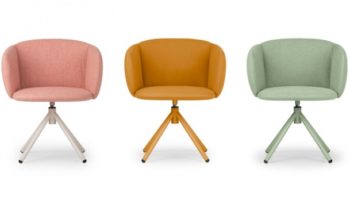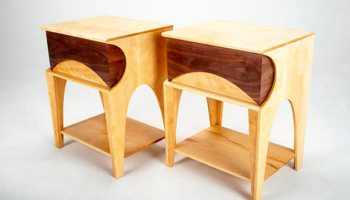Aalto’s Artek Lounger
Of all the great modern architects/designers who emerged along with the Bauhaus school to assert an aesthetic of functionalism, minimal adornment, and wide-scale accessibility, Finnish innovator Alvar Aalto was among the greatest.
Lounger 43. Designed by Alvar Aalto. Manufactured by Artek.
Sometime in the mid 1920s, Aalto’s design sense underwent a dramatic evolution: he abandoned the Nordic neo-classicism at the forefront of Finnish design in favor of a “humanistic modernism” that placed a premium on a synthesis between form and function, placing utility at the forefront. The new philosophy was best evidenced by his designs for the Paimio Sanatorium, a project he “approached from the perspective of a patient and created a serene, but cheering environment. No detail escaped him: from the canary yellow paint on the stairs, to the heating and a specially modified tap from which water poured noiselessly to avoid disturbing fellow patients.”

He admired the simplicity of the Bauhaus school–especially their emphasis on elongated molded shapes as structural elements – but eschewed their reliance on industrial materials, preferring instead to use simple wood. To that end, he relied on the plentiful forests of Finnish birch (a variety that bends under heat and pressure yet retains torsional strength) to refine his techniques for laminating and bending wood.
Much of the furniture he designed for the Paimio Sanatorium features the same birch shaped into elegant curves: “Armchair 41” is an ergonomically designed reclining armchair that features a seat and backrest of one continuous sheet curled tightly at either end to form the headrest and legrest; “Armchair 42” is similar yet promotes a more rigid posture, the angles created by the wood’s curves somewhat more severe.
And “Lounger 43” is a Godsend for dyed in the wool modernists. It’s the quintessential chaise. Its single structural element is twin lengths of moulded laminated birch, subtly bent at three junctions to alter trajectory and form armrests, legs, and feet. The frame of the lounger rests between–a simple silhouette of soft curves, its wooden outlines provide the border for a plain web of the interwoven lengths of stitched nylon that constitute the chaise’s body. Though Aalto’s Lounger 43 debuted in 1936, we lucky purveyors of modernist form in its purest state can obtain it today–along with an extensive selection of several of Aalto’s original designs–courtesy of Artek, the company founded by Aalto circa 1930.
See Artek for further info.




Leave a Reply